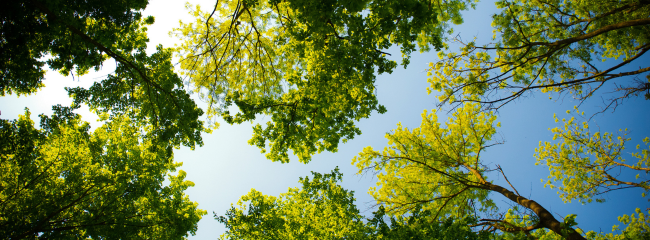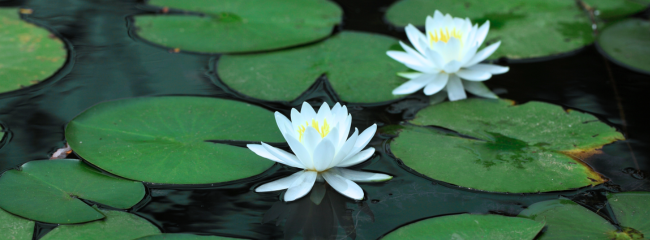A step-by-step process of learning mindfulness skills, building awareness, and creating community.
Mindful minutes help you to practice mindfulness skills while you “do” your life so you can “be” in the moment.
Weekly meetings help you learn to stop and focus inward to develop stillness within.
Sharing with your friends deepens and supports your growth.
About Mindfulness Practice

That does not mean you need to be “good” at it in order to practice it. Practice is what you do when you want to get better at something. That is why it is called a practice.
When a toddler makes art, it is “good” because it is a heart felt effort. A parent loves their child’s masterpiece. When practicing the art of mindfulness, you learn to play both roles. As the child you can explore and be curious… and in the parent role, you can practice compassion and self-acceptance.
You can do this! One step at a time.
We walk you through this, and we walk together on this journey.
Walking is a part of practice.
So is sitting.
And so is doing your laundry and brushing your teeth.
Here you connect the dots between learning this new skill called mindfulness and doing everything that you do every day. You can shift your focus from “doing” to a focus on “being” when you wash the dishes to create happiness instead of dread.
Washing the dishes because the dishes need to be washed = dread
Washing the dishes because you simply enjoy the moment while you wash the dishes = happiness.
How do you learn these skills?
Mindful minute exercises are offered every day. Just a minute or two a day and you start breathing life into your…Life…with ease.
You have a minute or two, right?
Read More ↓

- Short 1-2 minute audio guides you through a simple activity.
- Practice this activity as often as you like. With practice and repetition, you can learn how to practice it without the guided audio. It’s easy when it’s brief!
- You can share about your experience doing these daily exercises either with your small group or with the greater community sharing format.

Learn to focus inward to develop stillness within.
Does that sound refreshing?
Or
Scary? Exciting? Hard?
When you do anything that is scary, exciting or hard, don’t you want to be with a good friend? And then it’s usually not quite so scary or hard. Sharing excitement and refreshing experiences makes them all the richer.
I don’t know these people yet, how could they be good friends?
The sharing structure is designed to help build trusting relationships:
- sharing guidelines
- private groups
- mindful speaking and listening…these skills help us to build better relationships in our lives. It starts here in the mindfulness community, but it will positively effect all of your relationships!
A spiritual friend is a great friend to have to support you on this journey.

How much time does this weekly meeting take?
What if I can’t meet at the scheduled time?
Guess what?
You get to schedule your time to meet!
You meet when you are available.
To strike a balance between connection and flexibility, you will meet asynchronously. Your group is small (about 5 people) so getting to know each other is easy.
The weekly session posts on Friday. You’ll need to schedule a 30 minute slot of your focused time before Monday for Part 1.
Part 2 involves another 15-25 minutes of your focused time for listening practice to complete before your next lesson posts.

Part 1: 30 minutes
You choose your time between Friday and Monday.
10 minute guided meditation
5 minute walking or movement meditation
5 minute silent mediation
5 minute reading
5 minute sharing
Part 2: 15-25 minutes
You choose your time between Monday and Friday.
5 minute meditation
10-20 minute mindful listening
1 minute bell meditation

You are invited to share from your heart. During the last 5 minutes of the Part 1 practice, you may share your experience with the practice, the reading, and any insights, challenges or questions.
You will witness each other’s experience with the practice. You will practice listening deeply and speaking mindfully. You will be seen and heard. Your practice and experience will be validated by having this shared experience.
If magically your group is able to coordinate a time to meet, well guess what? Your group can plan to meet together for either or both parts do the practice and sharing all at once live via the virtual platform.

Guided meditation in this tradition helps you to bring awareness to the present moment, grounding in an experience that you are having right now.
You’ll be guided through posture, breath, and attention. There is lots of space in between prompts for you to practice. It’s not constant talking and it doesn’t bring you to an imaginary place.
Focus can be hard in meditation, so the guidance helps bring you back in a gentle way, so you can accept the moment of drifting while you make another attempt to stay present with your breath.
Guided meditation teaches you how to practice and develop skills for a silent meditation. It also helps you to expand your awareness and view.

Community offers:
Friendship
Support
Protection
Strength
Refuge
Easy and natural growth in mindfulness skills
Your friend’s mindfulness practice supports you in your practice. Your presence supports your friends in their practice – simply by just being here. This is a beautiful lesson in love and acceptance.
You’ll be placed in a small private group of about 5 people who live near you. This creates intimacy and safety for practicing and sharing, and also allows for meeting up in real life as you might wish. You’ll share insights, challenges, and questions about your experience with the practice.
About Mindfulness Community
Be True Peace is a mindfulness program and practice community made accessible to busy people like you. Based on the teachings of Thich Nhat Hanh, this program offers simple exercises that have profound effects on your well-being.
This mindfulness practice is available to people of any religion and culture.
The heart of this program is the community. Your mindfulness grows and strengthens when you practice together with friends. A course or a book on mindfulness is a wonderful resource, but it is a challenge to build a consistent mindfulness practice in a vacuum. Imagine the community as a river. When you step into it, the flow of the practice builds and supports your movement in the direction of mindfulness.
The foundation of this practice is a set of global ethics called the five mindfulness trainings. These standards have been adopted by the United Nations.
10% (or more) of all membership proceeds are donated to TNH Foundation.

A humble Buddhist monk and Zen Master, Thich Nhat Hanh was a global spiritual leader, poet, and peace activist, revered throughout the world for his powerful teachings and bestselling writings on mindfulness and peace that have touched millions of people.
He was a pioneer in bringing Buddhism to the West, founding eleven monasteries, dozens of practice centers, and a world-wide community of tens of thousands of students who practice in their local groups.
He redefined Buddhism in the East, dismantling dogmatism, while making the lessons of Buddha accessible to people of any religion or culture.
The crux of his teaching is this: You can learn to live happily in the present moment with mindfulness practice, the only way to truly develop peace in yourself and in the world
His students affectionately call him Thay, meaning teacher.

This practice is known as the Plum Village tradition. Created by Thich Nhat Hanh, it comes from a Vietnamese Zen Buddhist lineage. However, you do not need to be, nor become, nor have any desire to become Buddhist in order to practice this.
Thich Nhat Hanh revolutionized Buddhism, to clear away the dogma that tangled up the teachings over time and focused on key teachings of the Buddha that can reach any human being.
The Plum Village practice is inclusive with no discrimination (intended, at least). The techniques are trauma-sensitive.

This light and gentle practice style taught by Thich Nhat Hanh is named after the first monastery he founded in France.
5 qualities make this mindfulness tradition unique.
1. Mindfulness is a way of life. It’s a practical application to daily activities, not just a triage technique for stress.
2. Community practice supports these daily efforts of mindfulness and offers energy and inspiration to follow this path.
3. Engagement brings people off their meditation cushions and into action, connecting the refreshing inner peace with efforts to relieve suffering in the world.
4. Monastic communities keep the teachings and practice alive. They host retreats for visitors to deepen their practice.
5. The 5 mindfulness trainings are the ethical foundation. These modernized Buddhist precepts have been adopted by the United Nations as a global, non-sectarian ethical path for humanity.
(Learn more about the MTs here )

Be True Peace is a community for busy people like you and find at least one of the following to be true:
You want to:
* feel a deeper sense of inner peace.
* learn mindfulness because you heard that it would be good for you.
* learn skills to manage difficult emotions and reactions.
* connect and practice with other moms.
* develop spiritual friendships.
* make sense of and live peacefully in this world.
* take action to make the world a better place.
* learn more because you read a book by Thich Nhat Hanh.
* can’t find a local or online sangha that works in your schedule.
New and experienced meditators are welcome here.
My name is Jennifer Whiteside. I’m a student of Thich Nhat Hanh (Thay) since 2003. In 2015 I ordained as a lay member of the Order of Interbeing. A dharma name is usually chosen for the ordainers by Thay. However he just had a stroke and couldn’t speak, so Sister Chan Kung, his bestie for over 40 years, sat with him and was inspired to call me Chan Bich Dao or True (Blue) Peach Blossom.
My adult life so far has two distinct stages. 1. single until age 40. 2. married with children.
Part 1. A single woman with a strong hankering for peace and transformation, I focused my career on the healing arts (acupuncture and Chinese Medicine) and I developed a strong daily meditation and weekly practice with my local community (sangha). I attended retreats 2-4 times per year until having a family in 2018. Looking back now, I see how luxurious all that time was.
Part 2. As a mom of two small children, sitting on a cushion is a challenge to fit in. The bliss doesn’t always translate when silence is a premium. During the extra five minutes of “me time”, my kids manage to throw their entire wardrobe all over the room and move their bed to block the door.
